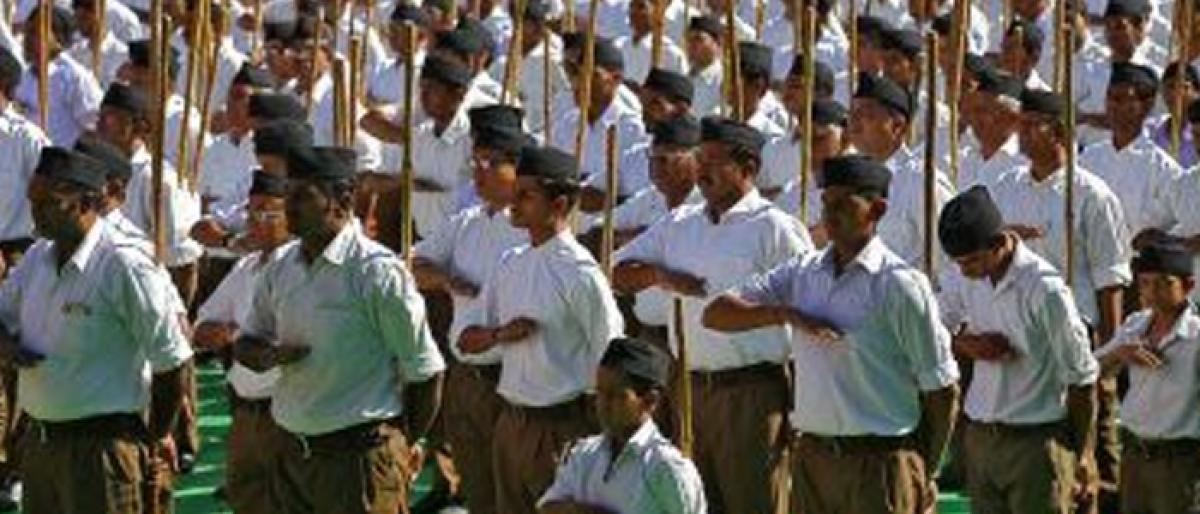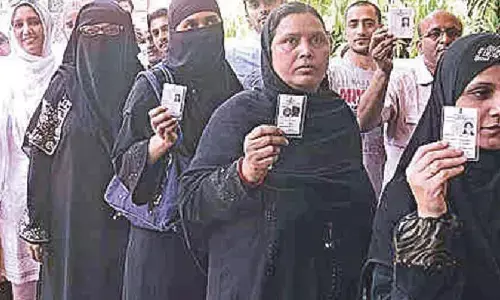Nationalist undertow in India’s politics

As the celebrations subsided on Indian Prime Minister Narendra Modis election in 2014, many Indians might have been wondering, we then wrote, what they had done Above all, they voted decisively for change from the elitist Indian National Congressdominated politics of the past and for a new openness in the hope that Modi would lift the country out of lowlevel growth and political scandal and co
As the celebrations subsided on Indian Prime Minister Narendra Modi’s election in 2014, many Indians might have been wondering, we then wrote, what they had done. Above all, they voted decisively for change from the elitist Indian National Congress-dominated politics of the past and for a new openness in the hope that Modi would lift the country out of low-level growth and political scandal and corruption. Indian voters demanded a move away from a government by the few for the few. They voted for can-do decisiveness rather than policy timidity.
There were lingering worries, nonetheless, about Modi’s Hindu-nationalist origins. Modi was a product of the Rashtriya Swayamsevak Sangh (RSS), a militant Hindu organisation whose original inspiration owed much to the fascist mobilisations in Europe in the 1920s and 1930s. The RSS has thousands of disciplined, ideologically inspired members and many of them have powered the BJP’s election successes. Modi’s controversial handling of ethnic violence as Chief Minister of Gujarat in 2002 — when 790 Muslims and 254 Hindus died, 2500 people were injured, and 223 more were reported missing — still hung in the air. Though a subsequent Indian Supreme Court investigation in 2012 cleared him of complicity in the violence, he continues to be associated with a Hindu-nationalist agenda that remains divisive.
Modi’s huge mandate and the BJP’s absolute majority were thus both a blessing and a burden. The fear was that he would inevitably come under pressure from hardliners to implement the RSS manifesto, which calls for the establishment of a Hindu rashtra (a Hindu polity) with uniform treatment of religious groups in its civil code, the construction of Ram Temple at Ayodhya, and abrogation of Article 370 of the Constitution, which gives special status to Jammu and Kashmir. Hardliners, such as M G Vaidya, a top RSS leader and ideologue, were already rallying for these objectives...
Around the world, India is celebrated as the world’s largest democracy. It scores well on many of the measures that mark a functioning and effective democratic polity. Political empowerment through many political parties and political activism at all levels is a notable achievement since independence 71 years ago.
Yet, interpreting the confluence of forces that shape India’s large and complex polity bedevils analysis that is ordered only around this singular achievement. Modi’s BJP government is the first single-party government since 1984. And, as our lead essay from Katharine Adeney points out, the worries about Indian nationalism still chafe at India’s democratic foundations: ‘many academics and activists have raised concerns about Hindu “majoritarianism” and its challenge to democracy and the rule of law’.
Indeed, there are a number of disturbing developments associated with the RSS, which counts as members Modi, Indian President Ram Nath Kovind, and several ministers including Culture Minister Mahesh Sharma. Modi has so far deftly dissociated himself from the grotesque extremes of RSS henchmen and managed to stay above the messy fray.
Modern Hindu nationalism is not mere traditionalism, says Arun Swamy. The Hindu nationalists seek not so much to preserve existing social hierarchies in Hindu cultures as they do to rewrite social orders fascistically to the benefit of Hindu populations. The Modi government appears to be actively pursuing ‘history rewriting’ and ‘historic romanticism’ agendas and has appointed what seems to be a historical revision committee to ‘prove that today’s Hindus are directly descended from the land’s first inhabitants and make the case that ancient Hindu scriptures are fact not myth…’
‘The Hindu nationalist rhetoric was played down (at least by Modi)’, as Adeney explains, ‘in favour of a development narrative. He put himself forward as a normal man, contrasting his humble origins with the “little princeling” Rahul Gandhi, presumed to be prime minister-designate of the Congress though never officially named as such’...
Events since 2014 raise the question of whether the BJP is the new dominant party of Indian politics. It has captured a raft of state legislatures, and although it did not manage to win a majority in the recent state election in Karnataka, it did win the largest number of seats. Adeney argues that the BJP has secured these electoral successes for three reasons.
The first is a shift in the dominant political narrative.
The National Election Survey reveals a huge rise from 35 per cent in 2009 to over 50 per cent in 2014 of those who agree that the will of the majority community should prevail in a democracy (‘community’ being understood in religious terms). Second, there is currently no national election machine so well-oiled or so powerful as the BJP’s. And thirdly, Modi remains a popular electoral figure who dominates politics at all levels.
The mobilisation of local alliances against the BJP in the national elections of 2019 is a long shot, says Adeney, although this strategy worked at the state level in Bihar in 2015. Yet, BJP’s political run with an undiluted majority in parliament will likely come to an end next year.
While support for the BJP and Modi in particular appears to be slipping — because of lacklustre economic performance and inadequate jobs growth — the party seems to be successfully rewriting India’s political handbook. But the comfortable assumptions in Washington, Tokyo and Canberra that this rewrite will extend the life of a government in India that is ‘more like us’ on agendas of economic and social reform or is willing to buy into the West’s current geopolitical agenda needs sober reassessment.
(Courtesy: Eastasiaforum.org; Article written by EAF Editorial Board at Crawford School of Public Policy, The Australian National University)
















